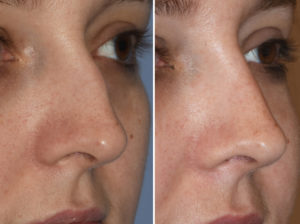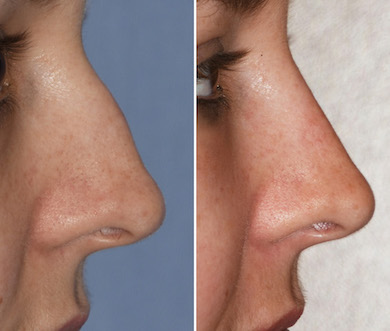Background: Rhinoplasty remains as the original and still the most popular of all facial reshaping procedures. By various changes to the underlying osteocartilaginous structure, the skin redrapes over it and reveals a new nasal shape, provided good skin retraction occurs postoperatively.
While changing the bone and cartilages of the lower two-thirds of the nose has undergone technical modifications over the years, how to access them as always only been my two methods…open vs closed. Rhinoplasty over the past century had been dominated by the closed approach until the 1990s. The open approach by a mid-columellar skin incision became popular which allowed for middle vault and extensive tip reshaping maneuvers to be more consistently done. The visibility of the open approach is one of the main reasons rhinoplasty has been able to achieve more consistent outcomes amongst larger numbers of plastic surgeons. It has allows the once few number of master rhinoplasty surgeons to grow in numbers.
But despite the excellent visibility of the open approach it is associated with a more prolonged recovery of tip edema and seeing the final aesthetic outcome. And it is probably true that its popularity has led to an overuse of the approach. Now too few surgeons are comfortable with the closed approach for performing more limited nasal shape changes.
Case Study: This young female was to undergo multiple facial changes of which one was her nose. She had a thin nose but had an elongated hump that was more cartilage than bone. Besides the hump reduction she also want some tip rotation.
Under general anesthesia and through bilateral interartilaginous incisions the hump was reduced by septal height, upper lateral cartilage and nasal bone height reductions. Tip rotation was accomplished by a beveled caudal septal resection.


Case Highlights:
1) The closed approach is an adequate technique for treating isolated nasal hump deformities.
2) Intercartilaginous incisions allow almost as much visibility for hump reduction as the open approach.
3) A closed approach offers full visibility of the results usually by three months after surgery.
Dr. Barry Eppley
Indianapolis, Indiana




